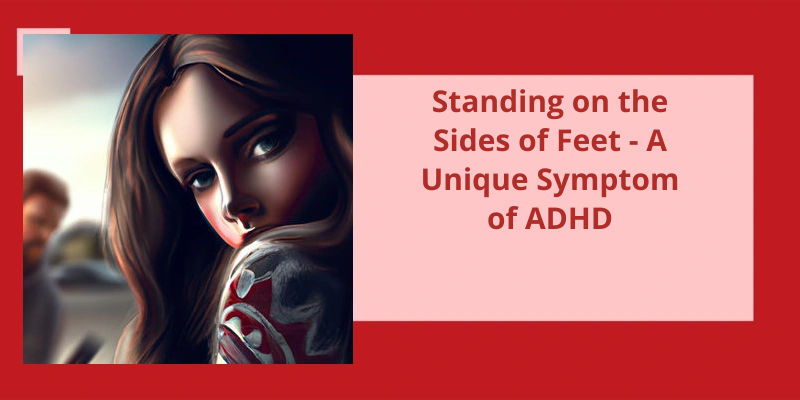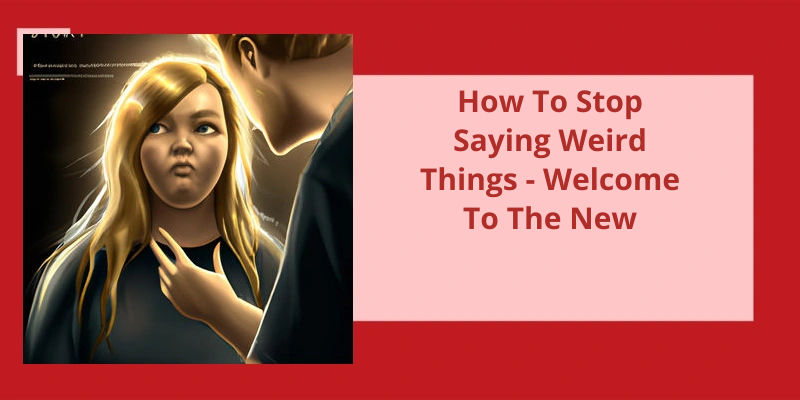Maintaining balance is an essential aspect of daily living, and it requires tremendous coordination and control of the body's center of gravity. However, some individuals may experience difficulty in balancing, which can result in postural sway, a condition where the body shifts from side to side. While postural sway may be a natural phenomenon, it’s commonly observed in people with neurodevelopmental disorders, such as attention deficit hyperactivity disorder (ADHD), autism, and dyslexia. Research suggests that this may be due to abnormalities in the cerebellum, a brain region responsible for gait, balance control, and cognition.
Why Do People With ADHD Sit in Weird Positions?
However, for people with ADHD, this postural sway can often manifest itself in seemingly unusual sitting positions. This may include sitting cross-legged, kneeling, or even sitting upside down on a chair. These positions can often be seen as disruptive, distracting, or even disrespectful in certain settings. However, it’s important to understand that these individuals aren’t intentionally trying to disrupt the environment around them, but rather their subconscious desire for balance is taking over their body, leading them to adopt these positions.
Fidgeting can actually be helpful in achieving a sense of balance and focus for individuals with ADHD. This is why certain tools, such as fidget spinners or stress balls, may be helpful for these individuals in helping them stay focused and centered during long periods of concentration.
Additionally, ADHD is often associated with poor impulse control and hyperactivity, which can also contribute to these unique sitting positions. Individuals with ADHD may not be able to fully regulate their movements, leading them to shift and move about in their seat without even realizing it. This can often be seen as disruptive or disrespectful, but it’s important to understand that these individuals aren’t intentionally trying to be disruptive, but rather their neurological differences make it difficult for them to fully control their movements.
It’s also worth noting that these unique sitting positions may actually provide some benefit for individuals with ADHD. For example, sitting cross-legged or kneeling may actually provide a greater sense of grounding and stability for these individuals, helping them feel more focused and centered.
Overall, it’s important to approach these unique sitting positions with empathy and understanding, recognizing that they aren’t intentional disruptions, but rather a manifestation of the individuals neurological differences. By creating a more inclusive and understanding environment, we can help individuals with ADHD feel more comfortable and supported in their learning and work environments.
Other Physical Manifestations of ADHD, Such as Excessive Talking, Tapping, or Restless Movements
- Excessive talking
- Tapping
- Restless movements
However, it’s important to remember that not everyone with ADHD exhibits physical signs of restlessness or anxiety. Each person’s experiences with ADHD are unique, and it’s essential to understand and recognize the various ways that the disorder can manifest.
Do People With ADHD Move Weird?
They may also exhibit poor coordination and balance, as well as problems with posture and gait. This can lead to a noticeable awkwardness in their movements, which some people may interpret as “weird.”. However, it’s important to understand that these physical symptoms aren’t necessarily a result of the ADHD itself, but rather a side effect of the underlying neurodevelopmental disorder.
It’s worth noting that people with ADHD may face a variety of challenges beyond just physical symptoms. For example, they may struggle with impulsivity, distractibility, and difficulty focusing on tasks for extended periods of time. They may also experience difficulty regulating their emotions, leading to problems with anger, anxiety, and depression. Again, these symptoms can vary widely from person to person, and not everyone will exhibit every symptom associated with ADHD.
While physical restlessness and fidgeting are common symptoms of ADHD, not all people with the disorder will exhibit them. For those who do, it’s important to recognize that these symptoms aren’t evidence of “weirdness” or awkwardness, but rather a result of the underlying neurodevelopmental disorder. It’s important to approach the disorder with empathy and understanding, rather than judgement or stigmatization.
Source: Adult ADHD: 14 Signs and Symptoms – Healthline
Now that we understand what the ADHD walk is, let’s dive deeper into how it relates to the symptoms and challenges faced by those with ADHD, as well as potential solutions and treatments.
What Is the ADHD Walk?
While there are many different ways that ADHD can present itself, one of the hallmark symptoms of the disorder is difficulties with executive functioning. Executive functioning refers to a host of cognitive processes that help us plan, organize, and complete tasks. In many cases, these processes also play a role in our movement and coordination. When the brain isn’t functioning properly, however, this can lead to faulty movements – like the “ADHD walk” – as well as other physical symptoms.
One possible explanation for the ADHD walk is that it’s related to cerebellar dysfunction. The cerebellum is the part of the brain that’s responsible for coordinating our movements and maintaining our balance. However, this is just one theory, and more research is needed to understand the underlying causes of this phenomenon.
Regardless of the underlying causes, it’s clear that the ADHD walk is a real and potentially worrisome symptom of the disorder. For individuals with ADHD who experience this symptom, it can lead to a host of negative consequences. For example, it can make it more difficult to participate in sports or other physical activities, leading to a decreased quality of life. Additionally, it can make it more difficult to navigate everyday situations, such as walking down the street or climbing stairs.
Fortunately, there are treatments available that can help individuals with ADHD – and the ADHD walk – improve their functioning. Additionally, behavioral therapies such as cognitive-behavioral therapy (CBT) or parent training may be helpful in improving executive functioning and helping individuals with ADHD develop better movement patterns.
By addressing the underlying causes of the disorder and implementing appropriate treatments, individuals with ADHD can improve their overall functioning and live happier, more fulfilling lives.
Watch this video on YouTube:
While ADHD is most commonly known for it’s effects on attention and hyperactivity, it can also affect motor skills. The differences in brain structure can make it more challenging for people with ADHD to control their movements, which can lead to unique physical behaviors. One example of this is the way those with ADHD may walk. It’s not uncommon for people with ADHD to walk differently than those without the condition, and understanding why can provide important insights into how the brain works. In this article, we’ll explore the reasons why people with ADHD may walk differently, as well as some of the potential solutions to help overcome these challenges.
Why Do People With ADHD Walk Differently?
As we learn more about ADHD, we’re discovering that it affects more than just a persons ability to focus and concentrate. It’s been observed that people with ADHD tend to walk differently than those without the condition, but why?
One theory is that differences in brain structure could be a factor. Studies have shown that people with ADHD have differences in the size and connectivity of certain areas of the brain. This can affect the way signals are sent and received, making it harder to control movements.
Most people don’t have to think about how to take each step when walking, it comes naturally.
Toe walking is a common characteristic seen in children with ADHD. Toe walking may also be a way for children to increase stimulation, as they often crave sensory input.
Interestingly, research has also found that the walking patterns of people with ADHD can change after taking medication. Studies have shown that stimulants like Ritalin can improve gait and reduce the incidence of toe walking. This suggests that ADHD medication may help to normalize motor function in addition to improving attention.
However, understanding how ADHD impacts motor skills can inform treatment and therapy approaches, as well as help to reduce any negative social stigmas associated with the condition.
The Impact of ADHD on Other Motor Skills and Activities, Such as Sports or Playing Musical Instruments
ADHD can have an impact on other motor skills and activities, including sports and playing musical instruments. Individuals with ADHD may have difficulty with coordination, balance, and fine motor skills, which can make it challenging for them to participate in certain physical activities. Additionally, ADHD symptoms such as impulsivity and difficulty with focus may make it hard to stay engaged in activities that require sustained attention. However, with proper diagnosis and management, individuals with ADHD can still successfully participate in and enjoy a range of physical and creative pursuits.
While the cause of idiopathic toe walking (ITW) is still unknown, recent studies suggest a possible connection between ITW and attention deficit hyperactivity disorder (ADHD). In fact, research has shown that individuals with ADHD may be significantly more likely to walk on their toes than those without the condition. This correlation highlights the importance of further exploring the link between ITW and ADHD.
Do ADHD People Walk on Their Toes?
While toe walking isn’t a definitive sign of ADHD, it’s been observed in a significant number of individuals with the condition. Others suggest that it may be related to sensory processing issues, as those with ADHD often have trouble regulating sensory input.
One study found that children with ADHD were more likely to walk on their toes than their typically developing peers.
Toe walking may be a sign of other conditions, such as cerebral palsy or autism, or it may be a benign habit that a child eventually outgrows. For this reason, it’s important to consult with a healthcare professional to determine the underlying cause of toe walking.
In some cases, treating the underlying ADHD may alleviate the toe walking. In other cases, physical therapy or orthotic devices may be needed to improve foot and ankle alignment and address any muscle imbalances that may be contributing to the toe walking.
The Link Between Sensory Processing Issues and ADHD
Recent studies have shown that there may be a link between sensory processing issues and ADHD. Sensory processing issues involve difficulty processing information from the five senses, which can lead to behavioral and emotional challenges. ADHD, on the other hand, involves difficulty with attention, hyperactivity, and impulsivity. Some experts believe that sensory processing issues may contribute to ADHD symptoms and that addressing these issues could help improve attention and behavior in individuals with ADHD.
Conclusion
Greater attention to postural sway, as well as corresponding assessments of the cerebellum, may therefore prove useful in both diagnosis and treatment for these neurodevelopmental disorders.






